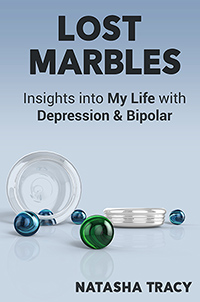Bipolar Spectrum Disorders – What is Cyclothymia?

Cyclothymia is neither bipolar depression nor unipolar depression but instead it is an illness that lies somewhere in the middle.
When psychiatric illnesses first started being recognized, some doctors felt that unipolar and bipolar depressions weren’t really the binary options for an illness but really just opposite ends of a spectrum. So then, one would have a spectrum where one could be a 100% bipolar depressive, or 100% unipolar depressive or they could lay somewhere in the middle. However, as illnesses need names and diagnostic criteria and not really vague percentages, bipolar and unipolar depression were defined separately.
Bipolar II – Within the Bipolar Spectrum
Bipolar 2 though, is recognition of this false dichotomy. Bipolar 2 really sits in between unipolar and bipolar depression as more depressed than bipolar 1 but more hypomanic (emotionally dysregulatory) than unipolar depression. (See the difference between bipolar 1 and bipolar 2 disorders.)
And that’s fine as far as it goes. But there is also recognition from a lot of doctors that other states lie even more in the middle, and cyclothymia is one such disorder.
What Is Cyclothymia?
Cyclothymia can be thought of as bipolar light. Cyclothymia contains hypomanic moods and moods that are depressive but do not meet the criteria for major depressive disorder. Cyclothymia is more common in women than men (as with rapid cycling bipolar disorder).
According to the Diagnostic and Statistical Manual of Mental Disorders (DSM-IV), cyclothymia is:
- For at least 2 years, the presence of numerous periods with hypomanic symptoms and numerous periods with depressive symptoms that do not meet criteria for a Major Depressive Episode. Note: In children and adolescents, the duration must be at least 1 year.
- During the above 2-year period (1 year in children and adolescents), the person has not been without the symptoms in Criterion A for more than 2 months at a time.
- No Major Depressive Episode, Manic Episode, or Mixed Episode has been present during the first 2 years of the disturbance
- The symptoms in Criterion are not better accounted for by Schizoaffective Disorder and is not superimposed on a psychotic disorder (like Schizophrenia, Schizophreniform Disorder, Delusional Disorder, or Psychotic Disorder Not Otherwise Specified.)
- The symptoms are not due to the direct physiological effects of a substance (e.g., a drug of abuse, a medication) or a general medical condition (e.g., hyperthyroidism).
- The symptoms cause clinically significant distress or impairment in social, occupational, or other important areas of functioning.
- Note: After the initial 2 years (1 year in children and adolescents) of Cyclothymic Disorder, there may be superimposed Manic or Mixed Episodes (in which case both Bipolar I disorder and Cyclothymic Disorder may be diagnosed) or Major Depressive Episodes (in which case both Bipolar II Disorder and Cyclothymic Disorder may be diagnosed)
Cyclothymia may also appear with other mental illnesses like anxiety disorder.
Treatment of Cyclothymia
Like with bipolar disorder or major depression cyclothymia can be treated with medications and other therapies. Typical medication treatments for cyclothymia include:
- Lithium (a mood-stabilizer)
- Anticonvulsants (anti-seizure medication) like divalproex (Depakote) and lamotrigine (Lamictal)
- Atypical antipsychotics like aripiprazole (Abilify) and quetiapine (Seroquel)
- Antidepressants (only recommended in combination with other, mood-stabilizing, medication)
Therapies for cyclothymia include:
- Cognitive behavioral therapy (CBT)
- Family therapy
- Group therapy
- Social rhythm therapy
Untreated Cyclothymia
Just because the symptoms of cyclothymia are not as severe as bipolar disorder or major depression does not mean it shouldn’t be taken seriously.
There is a concern that cyclothymia can turn into full-blown bipolar disorder if left untreated and it may increase the risk of suicide.










In a quest to overcome unwanted feelings I wrote this poem.
http://bipolarpeople.blogspot.com/2018/09/who-are-we.html
Maybe I missed one of your topics that discuss how bipolar and any of its variants affects our behavior.
While its obvious to me that we change with mood changes, is there clinical evidence that determines
what behaviors are the result of bipolar? I’m sure this is an obvious question. Each of us responds in
our own way to the dictates of our brain. The results are both positive and negative with different degrees
of variation.
Now see…You really do learn something new everyday!
Those are the good days, yes :) And really, most of my days – you’d be amazed at how much I have to learn for my job.
– Natasha Tracy
Thanks for highlighting the other end of the spectrum! Just wanted to add that the type of depression often experienced in the context of cyclothymia is dysthymia. As you say the symptoms are not as severe as the other variations of bipolar but the condition is equally as chronic. CBT and quetiapine turned things around for me :)
Hi Skully,
Glad to hear you found treatment that works for you. Hopefully you’ll never see any worsening symptoms. :)
– Natasha Tracy